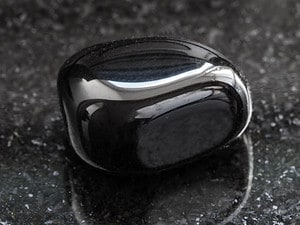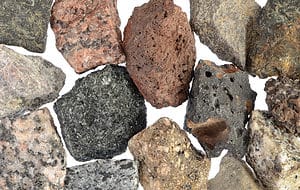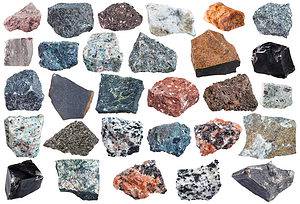
If you’ve been collecting rocks for a while, you probably know they come in three categories: igneous, sedimentary, and metamorphic. Igneous rocks are the result of cooling molten magma (inside the Earth) or lava (on the Earth’s surface). This results in either intrusive or extrusive igneous rocks, which each have different, fascinating characteristics. In this article, we explore extrusive igneous rocks and show you some examples to help you classify them when you see them.
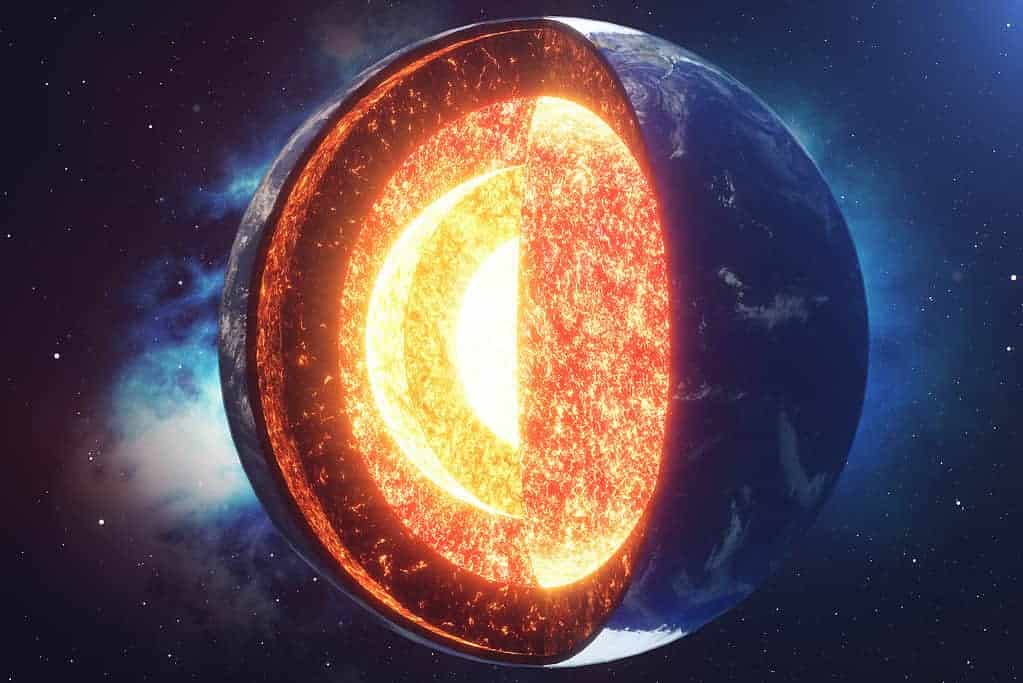
Igneous rocks form from magma that cools inside the Earth or lava that cools on the surface.
©Rost9/Shutterstock.com
How Do Extrusive Igneous Rocks Form?
Igneous rocks result from superheated magma within the Earth’s crust. They have different chemical makeups, and they can have different appearances based on how quickly they cool. Intrusive igneous rocks cool slowly inside the Earth and solidify before they reach the surface. Extrusive igneous rocks are formed on the surface from lava, the term for magma that flows on the surface. Because extrusive rocks come in contact with air or water, they cool quickly. This results in very small crystals because there is not enough time during cooling for larger crystals to form. Often the crystals are so tiny it takes a microscope to see them. Let’s look at some examples of extrusive igneous rocks so you can see for yourself.
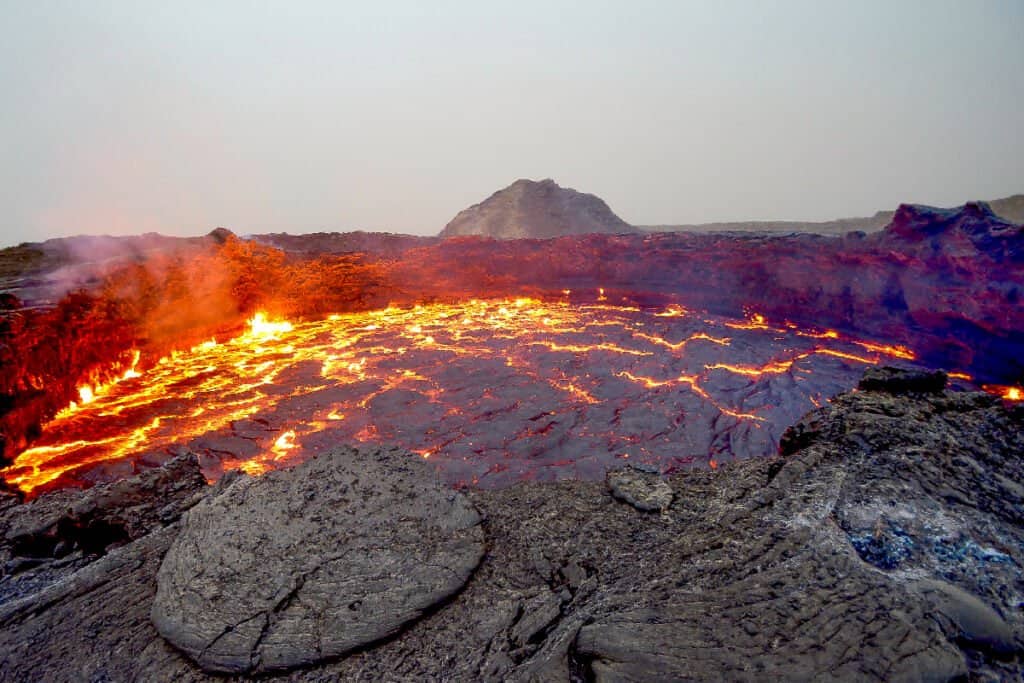
Rocks that form from lava at the Earth’s surface are called extrusive igneous rocks.
©mbrand85/Shutterstock.com
How Are Extrusive Igneous Rocks Classified?
Composition
Extrusive igneous rocks can be divided into four classifications based on their mineral makeup:
- Felsic – rocks with a high content of feldspar and silicon.
- Intermediate – rocks composed of 5-20% quartz.
- Mafic – rocks with a high content of magnesium and iron.
- Ultramafic – an igneous rock made of olivine and pyroxene with a very low percentage of silica.
Texture
Extrusive igneous rocks can also be classified by their texture. Here are the four texture categories:
- Aphanitic – a fine-grained rock with crystals that can be seen only with a microscope.
- Vesicular – a rock specimen with numerous pitted cavities on the surface and inside.
- Glassy – a rock with no visible crystals that looks like a block of colored glass.
- Pyroclastic – a specimen made of a mixture of ash, pumice, and pieces of rock.
Examples of Extrusive Igneous Rocks
1. Basalt
Basalt is a common material used in construction projects and as a road-building material. It’s the most common volcanic rock on Earth, making up about 90% of all volcanic rocks. There are also basalt rocks on the moon that are thought to be younger areas from more recent volcanic eruptions. Basalt is dark grey or black and has fine grains.
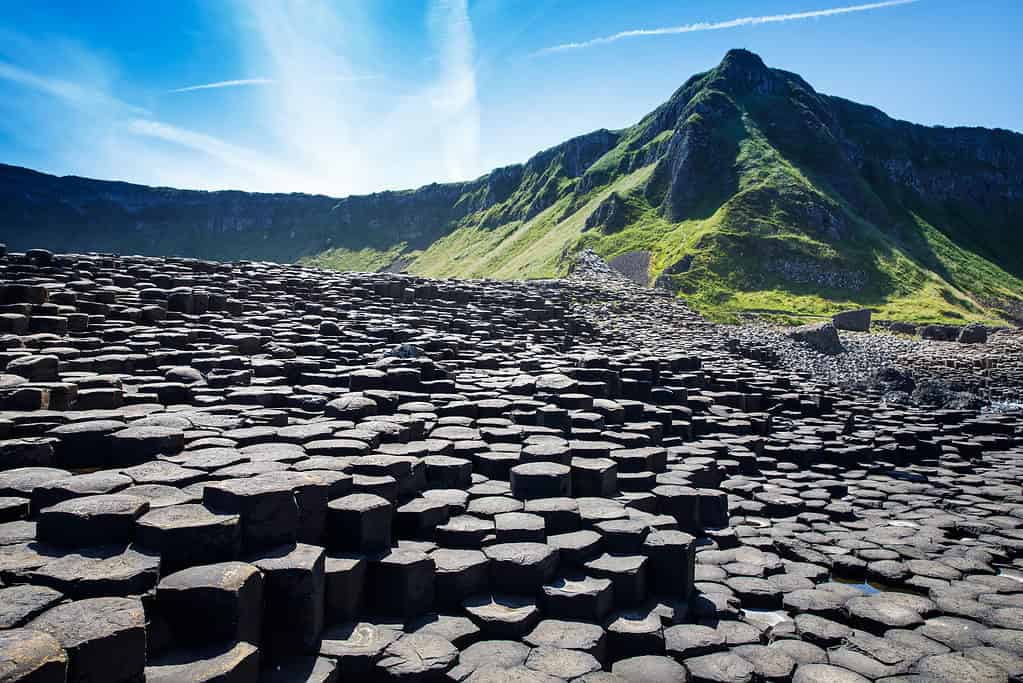
These basalt columns are the natural result of an ancient volcanic eruption in Northern Ireland.
©iStock.com/romrodinka
2. Andesite
Andesite is a gray or brown rock that forms in thick lava flows. It gets its name from the Andes Mountains, where it is plentiful. Andesite is often used as a construction material or for decorative purposes.
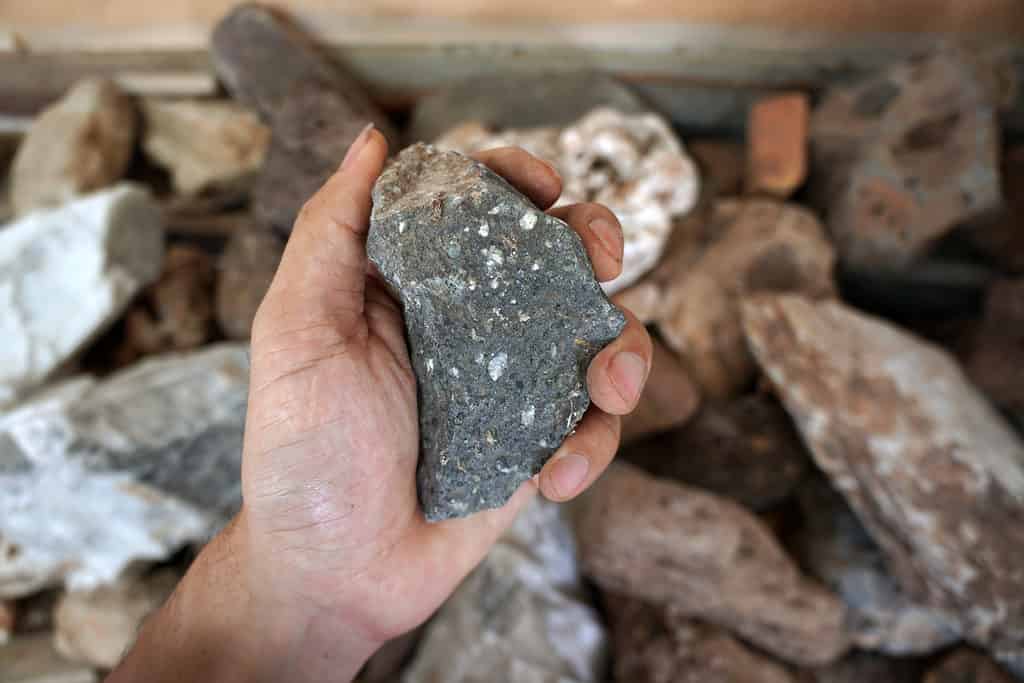
Andesite is named for the Andes Mountains, where it is plentiful.
©Yes058 Montree Nanta/Shutterstock.com
3. Obsidian
Obsidian is a black volcanic glass. It is an extrusive igneous rock that forms when lava cools rapidly with very little crystal growth. This gives it a smooth, glossy texture that makes it valuable for jewelry. When obsidian breaks, it shears off in shards that are as sharp as surgical scalpels. In fact, ancient people actually did use obsidian for primitive surgery, as well as for all-purpose knives and weapons such as spear and arrow points.
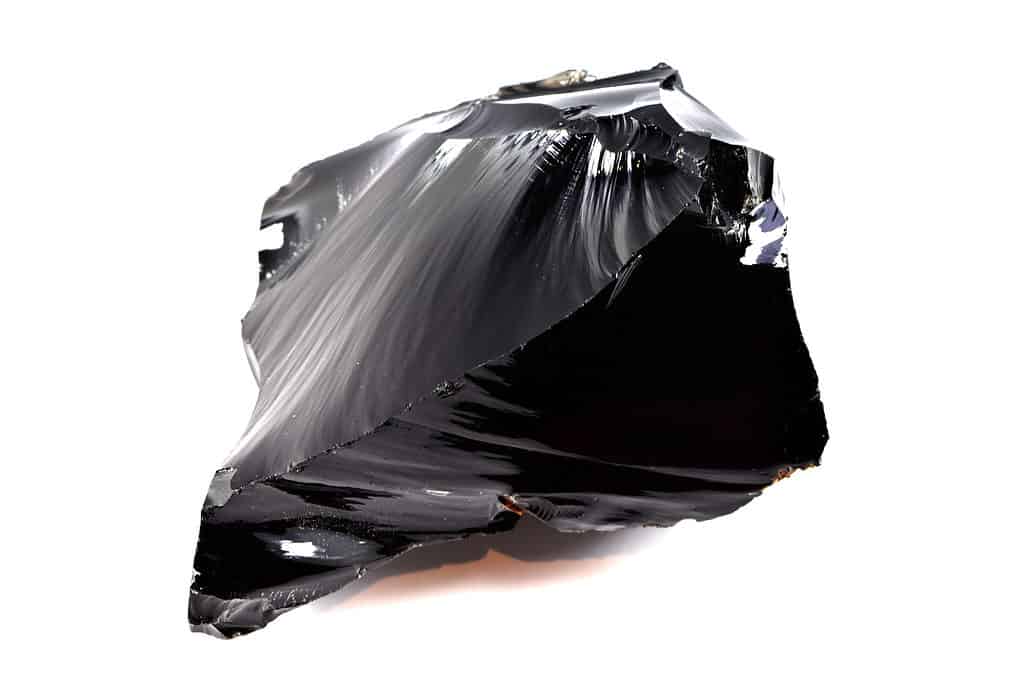
Obsidian is a beautiful stone, but careful touching it. Its edges can be razor sharp!
©TR_Studio/Shutterstock.com
4. Pumice
Pumice is a porous rock that forms out of gas-filled frothy lava. It solidifies quickly, leaving behind a light stone riddled with holes. It is so lightweight it does not sink in water unless it has been waterlogged a long time. Sometimes pumice from an eruption will float on the surface of the ocean, blown by the wind, for years before sinking. Pumice is used as an abrasive for cleaning and polishing and as an additive to some kinds of concrete.
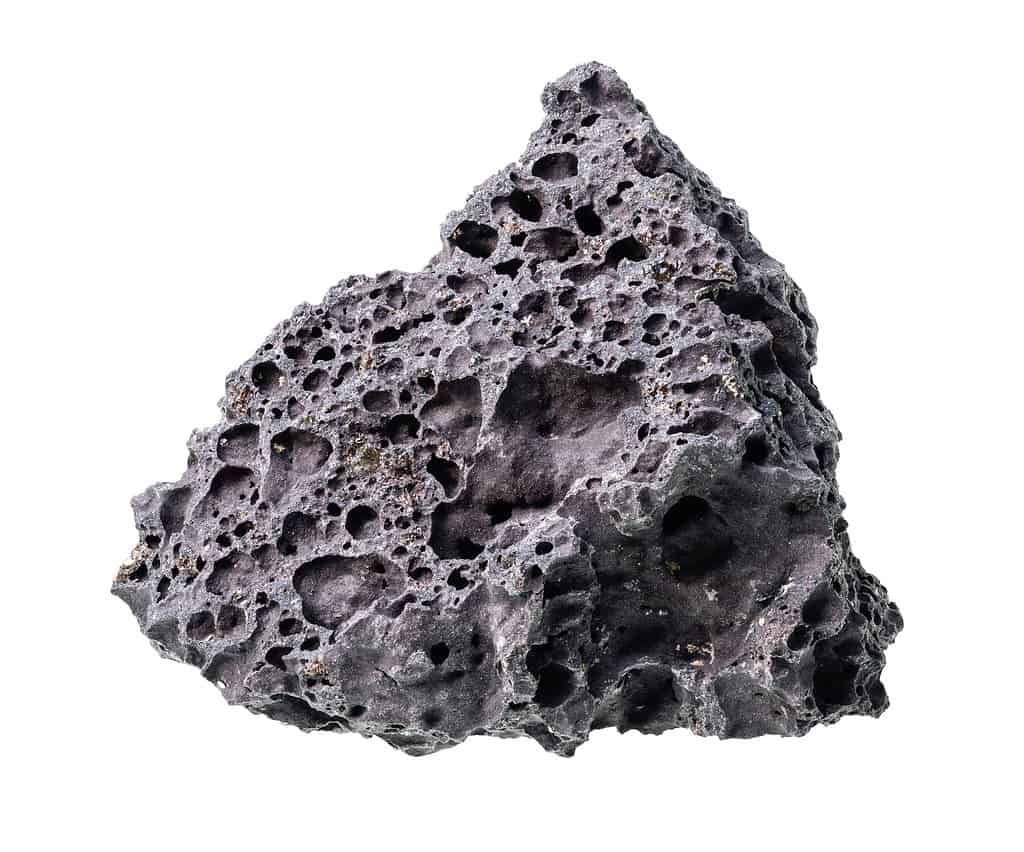
Pumice is full of cavities. It is so lightweight it can float on water and be blown around by the wind.
©KrimKate/Shutterstock.com
5. Rhyolite
Rhyolite is a light-colored stone with the most silica of any volcanic rock. It is usually fine-grained but sometimes can have larger mineral crystals embedded in it. Rhyolite is used in construction and decorating.

Rhyolite has the highest silica content of any volcanic rock.
©Yes058 Montree Nanta/Shutterstock.com
6. Tuff
Tuff is a stone that forms from volcanic ash that settles on the ground and turns into solid rock. Because it is a soft rock, it is easy to cut and carve. The Romans used it in their extensive construction projects. The Rapa Nui people used it to build their famous moai statues on Easter Island.
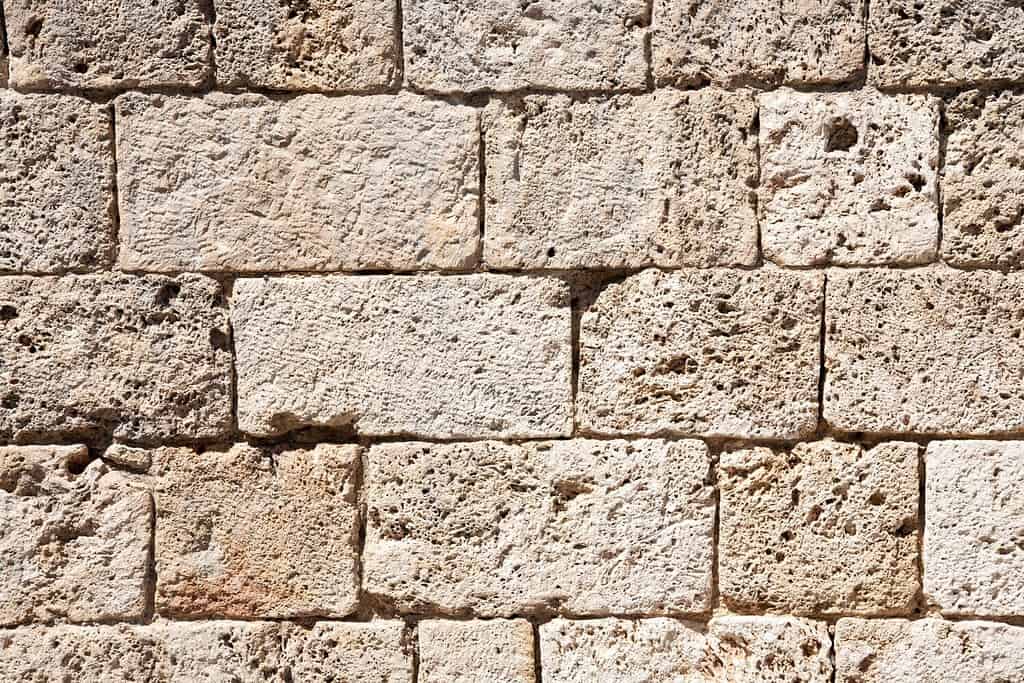
Tuff is a soft stone. Even in ancient times builders could easily cut it into blocks for building.
©imagesef/Shutterstock.com
7. Scoria
Scoria is a dark-colored rock that forms when a volcano throws out blobs of molten lava that cool in the air as they descend toward the ground. As a result of the gas bubbles in it, this type of rock is riddled with holes, like pumice. Unlike pumice, though, scoria is denser than water and sinks right away. Scoria is an essential stone in construction. It can be a component of concrete and cinder blocks.

Manufacturers use scoria to produce concrete and cinder blocks.
©www.sandatlas.org/Shutterstock.com
8. Trachyte
The main mineral in trachyte is alkali feldspar. It forms when lava rich in silica and alkali metals cools quickly. Trachyte has fine grains and comes in light colors. Interestingly, space rovers on Mars have even found samples of it there! Back on Earth, it is useful as a decorative construction material.

Robotic probes have discovered samples of trachyte on Mars!
©vvoe/Shutterstock.com
9. Phonolite
Phonolite is a relatively rare type of extrusive igneous rock. It is similar to trachyte but instead of quartz, it has nepheline or leucite. It has the unusual characteristic of sounding like metal when you hit a plate of it. This is why the Greeks called it “sounding stone” and, in English, one of its colloquial names is “clinkstone.” These names come from the fact that when you hit a plate of phonolite it sounds like you’re hitting metal.

This is a phonolitic dome known as La Catedral (The Cathedral) in Tenerife, Canary Islands.
©Santi Rodriguez/Shutterstock.com
10. Dacite
Dacite is a common volcanic stone that has a high percentage of silica and a low percentage of alkali metal oxides. It is made mainly of plagioclase feldspar and quartz. As far as uses go, dacite cannot be used in concrete because its silica content reacts badly with cement. However, builders do use it in construction projects requiring loose aggregate stone.
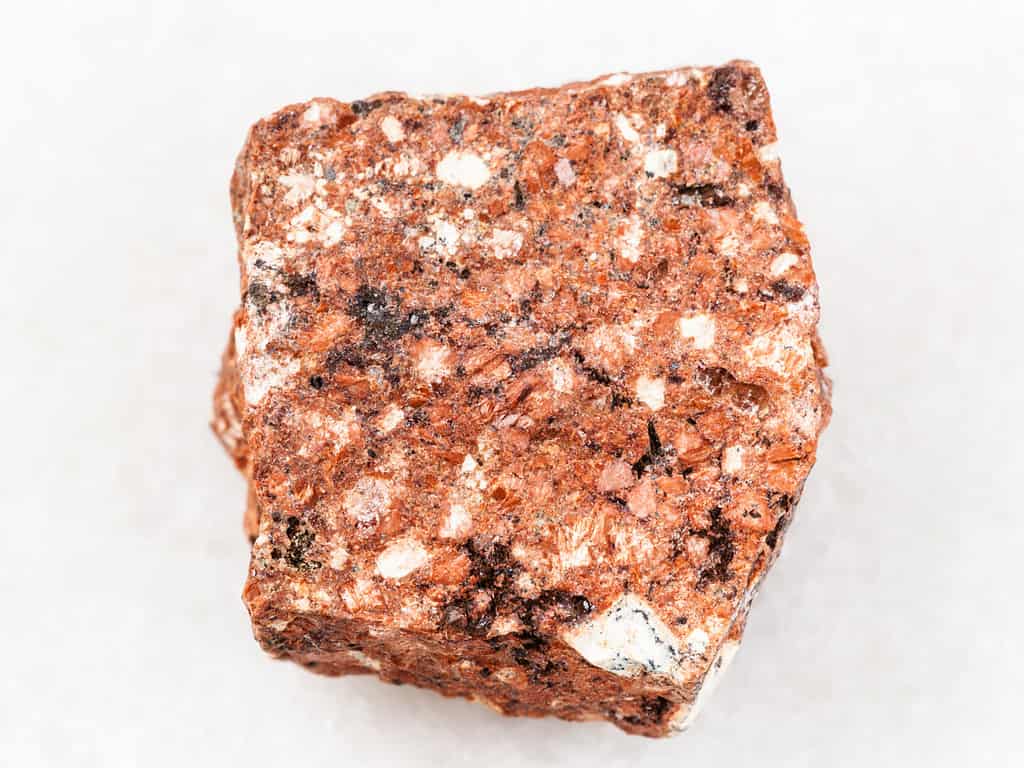
Dacite is useful as a loose aggregate stone in construction projects.
©vvoe/Shutterstock.com
11. Rhyodacite
Rhyodacite forms when lava in pyroclastic flows cools quickly and forms rocks rich in silica and low in alkali metal oxides. It consists of anywhere from 20-60% quartz. Some of the commercial uses of rhyodacite are in landscaping, as road aggregate, and even for cemetery markers.
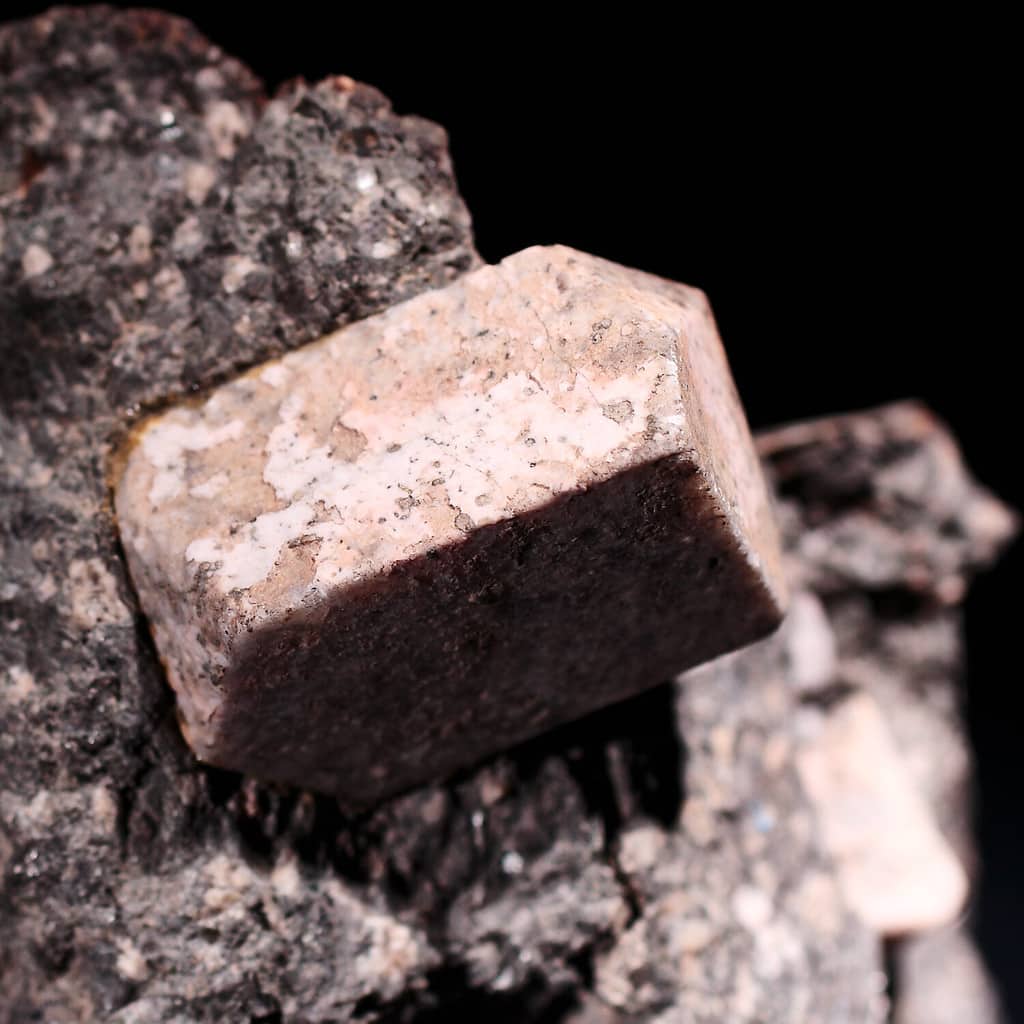
One use of rhyodacite is for cemetery markers.
©ARadoman/Shutterstock.com
12. Ignimbrite
Like rhyodacite, ignimbrite is a rock that forms in pyroclastic flows. It forms out of ash and fragments of pumice, glass, and crystal. Ignimbrite comes in an assortment of colors depending on the exact composition of the sample. Some of the typical colors it comes in are black, grey, white, beige, pink, or brown.
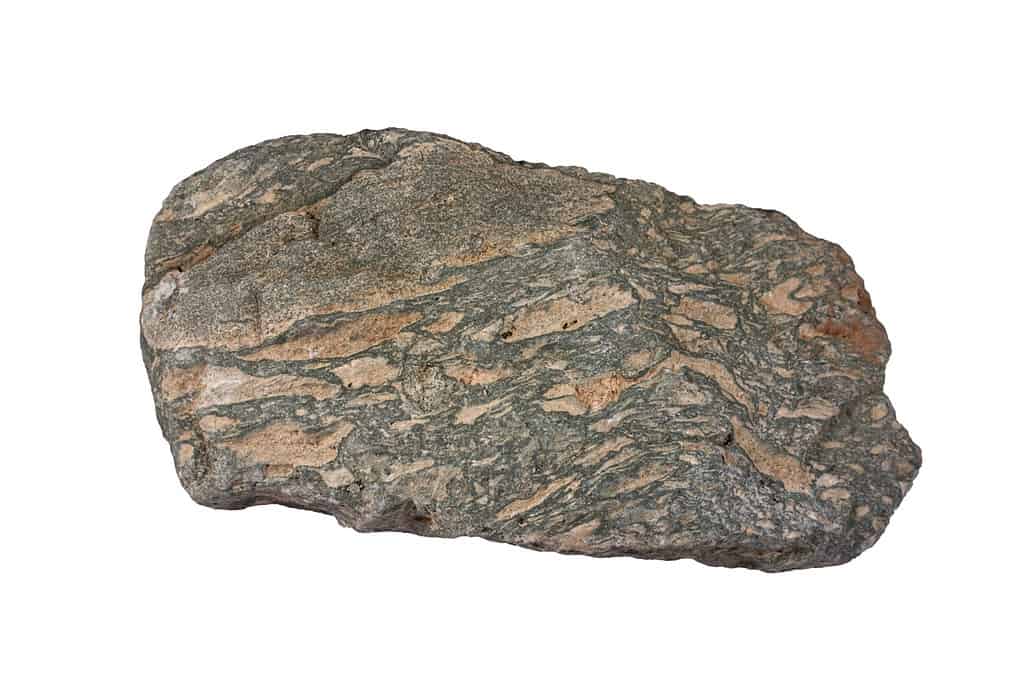
Ignimbrite forms in pyroclastic flows, where hot gasses and debris cascade swiftly down the volcano.
©www.sandatlas.org/Shutterstock.com
13. Komatite
Komatite is a kind of volcanic rock that is rich in magnesium but low in silicon, potassium, and aluminum. It gets its name from the Komati River in South Africa. It is a rare rock that was almost all formed 2.5-4 billion years ago. Gold and nickel deposits often occur alongside komatite.

Komatite is important in mining because it often accompanies valuable gold and nickel deposits.
©Adwo/Shutterstock.com
14. Perlite
Perlite is a form of volcanic glass that forms out of hydrated obsidian. When heated up to a high temperature, perlite expands up to 16 times larger and turns bright white. It’s a low-density and inexpensive material that has many different commercial and industrial uses. A few examples of these are: swimming pool filtration, as an additive to agricultural soil, as a component of insulation, ceramics, and explosives, in cosmetics, and in biotechnology applications.
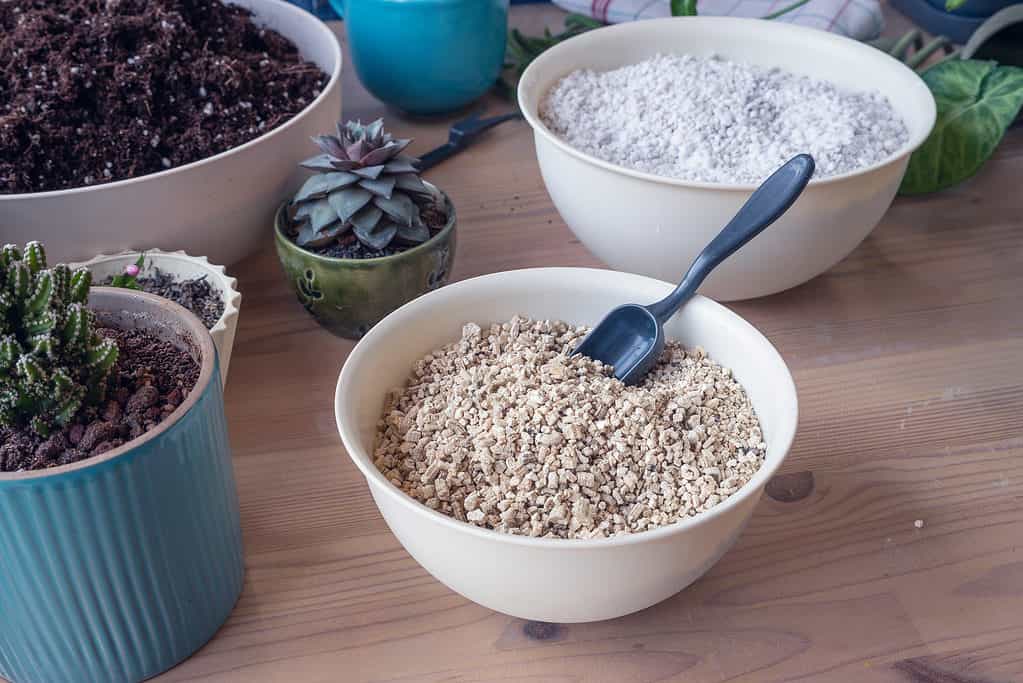
Close-up of perlite in a large pot on a table caring for indoor potted plants.
©iStock.com/CemSelvi
The Importance of Extrusive Igneous Rocks
Extrusive igneous rocks serve a great many practical purposes. They’re used in construction, decorations, jewelry, paving, and cosmetics. They are also used in research and as an additive to soil for plants. In ancient times they were used to make weapons, utility knives, and even surgical instruments. Now that you know how they form, how geologists classify them, and some examples of what they look like, see how many you can identify in your home or neighborhood.
Thank you for reading! Have some feedback for us? Contact the AZ Animals editorial team.





